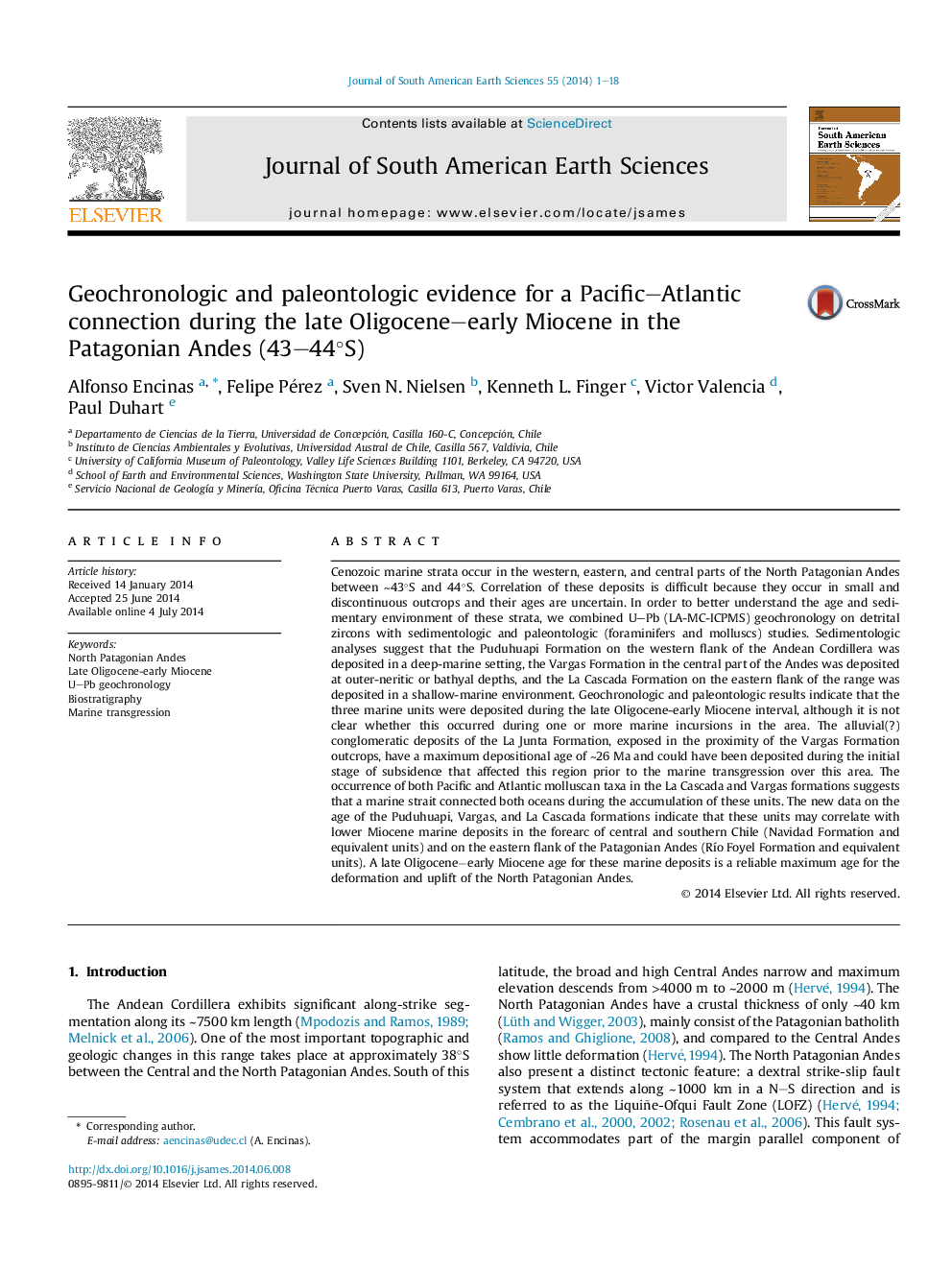| Article ID | Journal | Published Year | Pages | File Type |
|---|---|---|---|---|
| 4682296 | Journal of South American Earth Sciences | 2014 | 18 Pages |
•Late Oligocene–early Miocene age for marine deposits in the Andes at 43°S–44°S.•Probable Atlantic–Pacific connection during their deposition.•Early Miocene is maximum age for deformation and uplift of North Patagonian Andes.
Cenozoic marine strata occur in the western, eastern, and central parts of the North Patagonian Andes between ∼43°S and 44°S. Correlation of these deposits is difficult because they occur in small and discontinuous outcrops and their ages are uncertain. In order to better understand the age and sedimentary environment of these strata, we combined U–Pb (LA-MC-ICPMS) geochronology on detrital zircons with sedimentologic and paleontologic (foraminifers and molluscs) studies. Sedimentologic analyses suggest that the Puduhuapi Formation on the western flank of the Andean Cordillera was deposited in a deep-marine setting, the Vargas Formation in the central part of the Andes was deposited at outer-neritic or bathyal depths, and the La Cascada Formation on the eastern flank of the range was deposited in a shallow-marine environment. Geochronologic and paleontologic results indicate that the three marine units were deposited during the late Oligocene-early Miocene interval, although it is not clear whether this occurred during one or more marine incursions in the area. The alluvial(?) conglomeratic deposits of the La Junta Formation, exposed in the proximity of the Vargas Formation outcrops, have a maximum depositional age of ∼26 Ma and could have been deposited during the initial stage of subsidence that affected this region prior to the marine transgression over this area. The occurrence of both Pacific and Atlantic molluscan taxa in the La Cascada and Vargas formations suggests that a marine strait connected both oceans during the accumulation of these units. The new data on the age of the Puduhuapi, Vargas, and La Cascada formations indicate that these units may correlate with lower Miocene marine deposits in the forearc of central and southern Chile (Navidad Formation and equivalent units) and on the eastern flank of the Patagonian Andes (Río Foyel Formation and equivalent units). A late Oligocene−early Miocene age for these marine deposits is a reliable maximum age for the deformation and uplift of the North Patagonian Andes.
